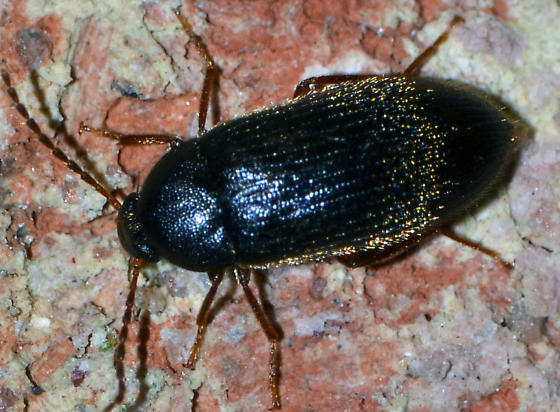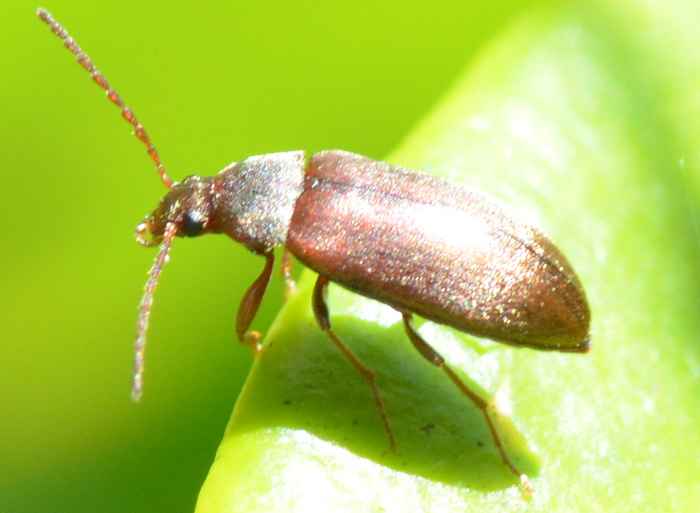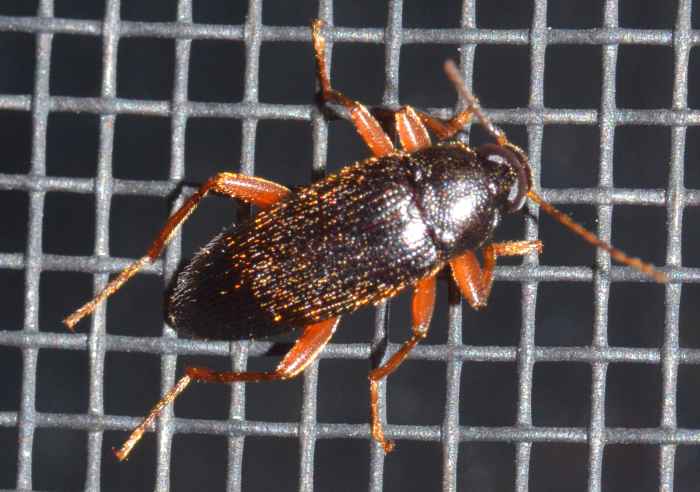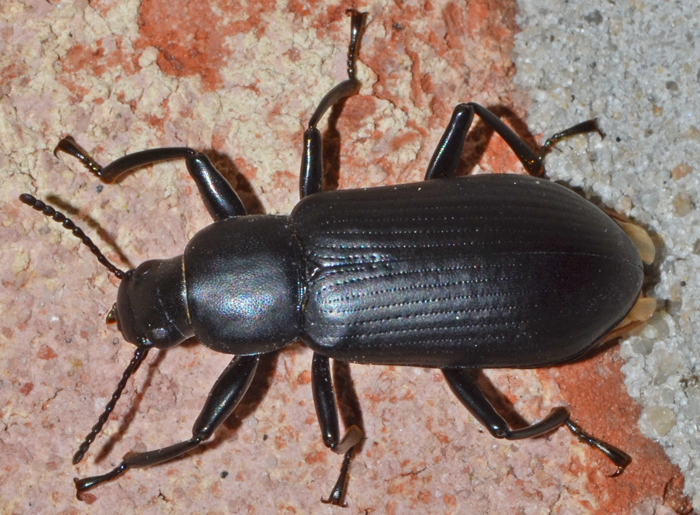 Alobates pensylvanica (False Mealworm Beetle). | Usually found under decaying bark in forests, the predatory False Mealworm Beetle is also attracted to lights at night. Its pronotum is almost square and the elytra have rows of fine punctures. The sister species A. morio is very similar, but rarer and has a tuft of yellow hair on the mouthparts. The species name is sometimes spelled "pennsylvanica".
bug guide (this photo): http://bugguide.net/node/view/1209864 | |
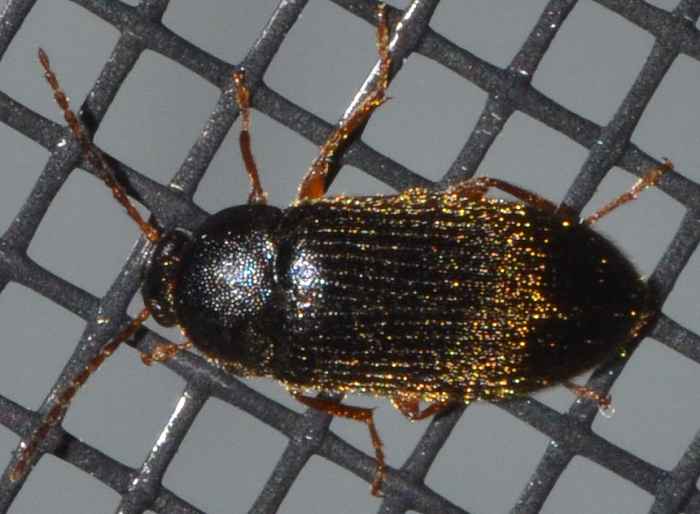 Hymenorus sp.. | The genus Hymenorus has 96 species in North America. The small photo was taken on 04/29/17 (10 pm).
bug guide (this photo): http://bugguide.net/node/view/634172 | |
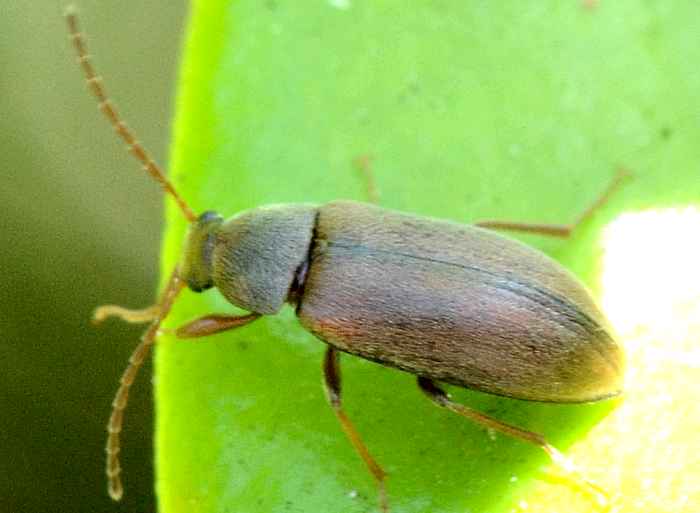 Isomira sp.. | A comb-clawed beetle of the genus Isomira (12 species in the US). I've found this specimen on a ligustrum leaf on Easter Sunday.
bug guide (these photos): http://bugguide.net/node/view/627754 Tom Murray: http://www.pbase.com/tmurray74/darkling_beetles_subfamily_alleculinae | |
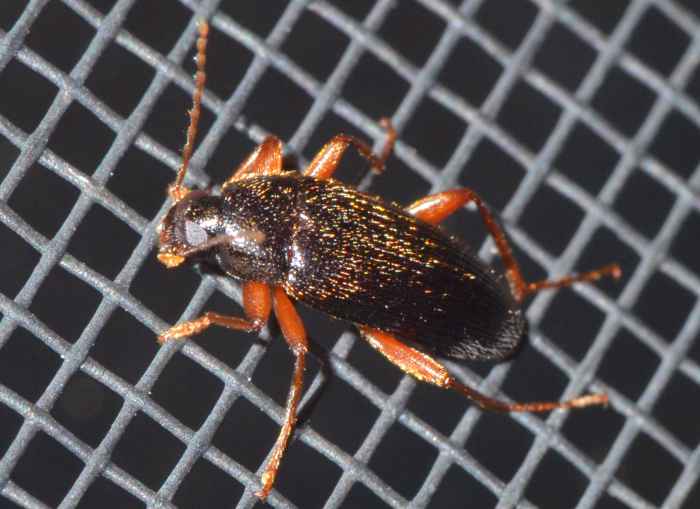 Lobopoda erythrocnemis. | Can be found under bark of pine or on dead standing pine trees and is attracted by lights.
bug guide (this photo): https://bugguide.net/node/view/574631 | |
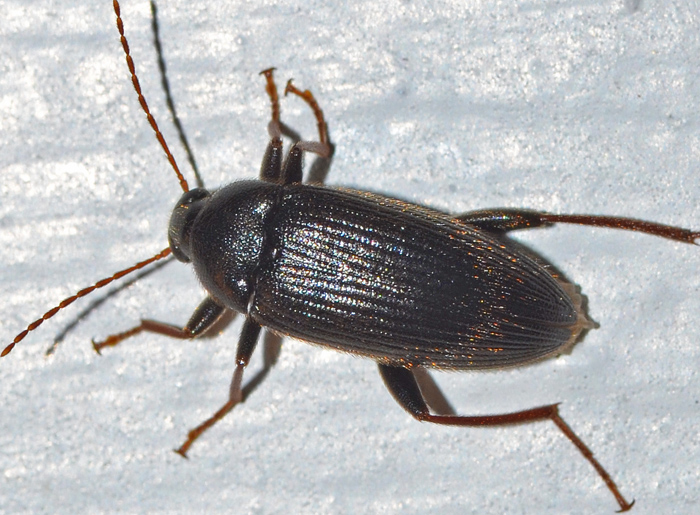 Lobopoda punctulata. | The genus Lobopoda has seven species in North America with no common names associate. The name itself means "lobed foot". bug guide (this photo): http://bugguide.net/node/view/1235325 | |
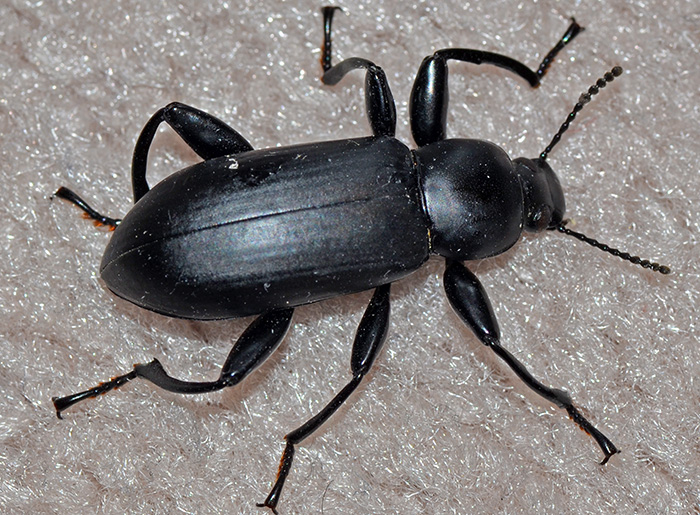 Merinus laevis. | After an evening of no new bugs at our porch light, I went to the bedroom and found this specimen of Merinus laevis crawling over the carpet. Although I was quite tired, I took a couple of pictures and released it to the outside. M. laevis is quite similar to Alobates (see above), but the dotted lines on the elytra are absent or less pronounced. bug guide (this photo): https://bugguide.net/node/view/1789646 | |
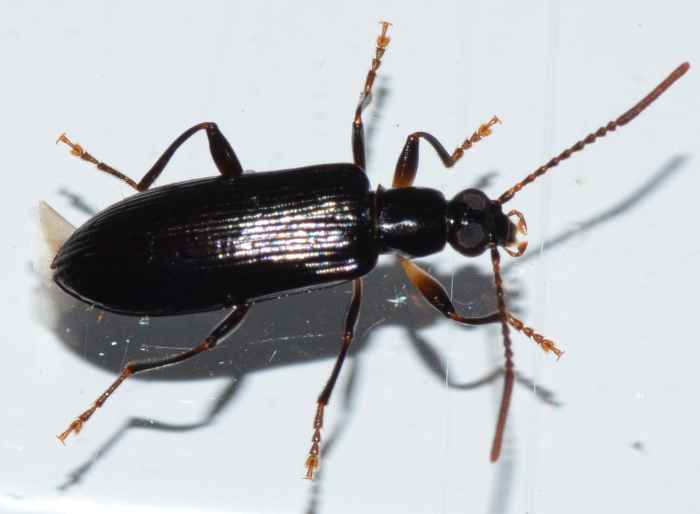 Statira basalis. | This long-jointed beetle is Statira basalis. It can be found mainly in the Southern states and Texas and seemingly is most frequent during the spring months. The genus has 15 species in the US. S. basalis can be identified by the pale yellow color of the basal half of their femora and coxae. bug guide (this photo): http://bugguide.net/node/view/628278 Insects of the CSRA: http://tinyurl.com/statira | |
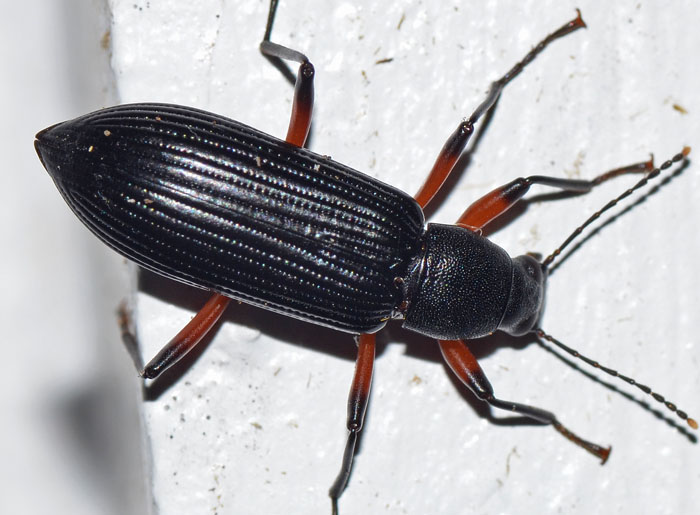 Strongylium tenuicolle. | This Darkling Beetle was attracted to our porch light. It lives on broad-leaved trees (e.g. oaks) and is rather common in our area. This particular specimen is a rare color variation that has bright red or orange legs (rather than the usual black ones). This variation occurs only in the Southeast. bug guide (this photo): http://bugguide.net/node/view/979162 | |
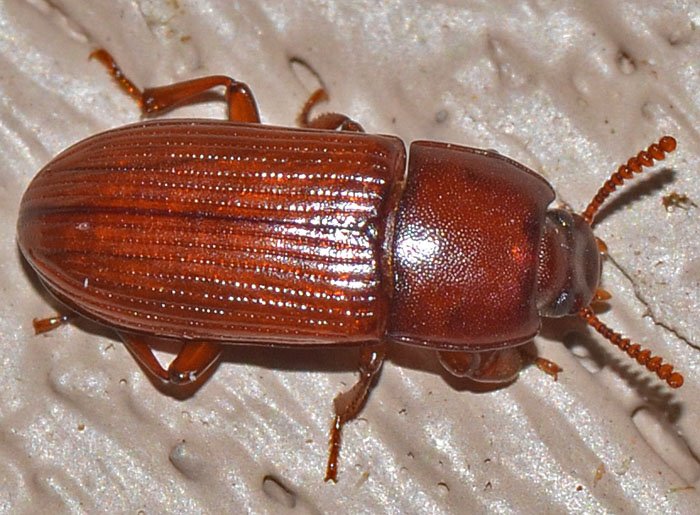 Uloma sp.. | A characteristic feature of Uloma is the beaded antenna that widens towards the tip. There are at least five species in North America. bug guide (this photo): http://bugguide.net/node/view/989108 |

